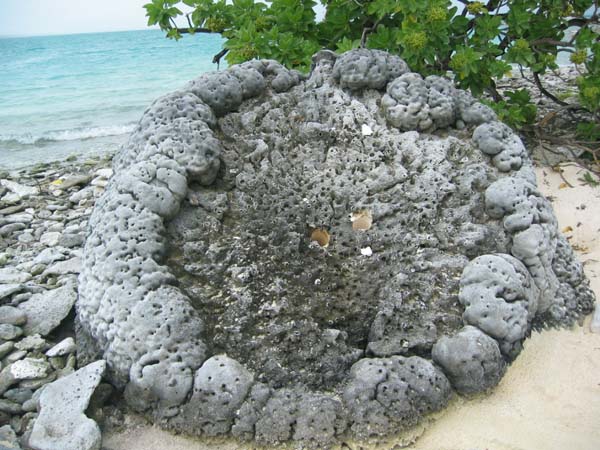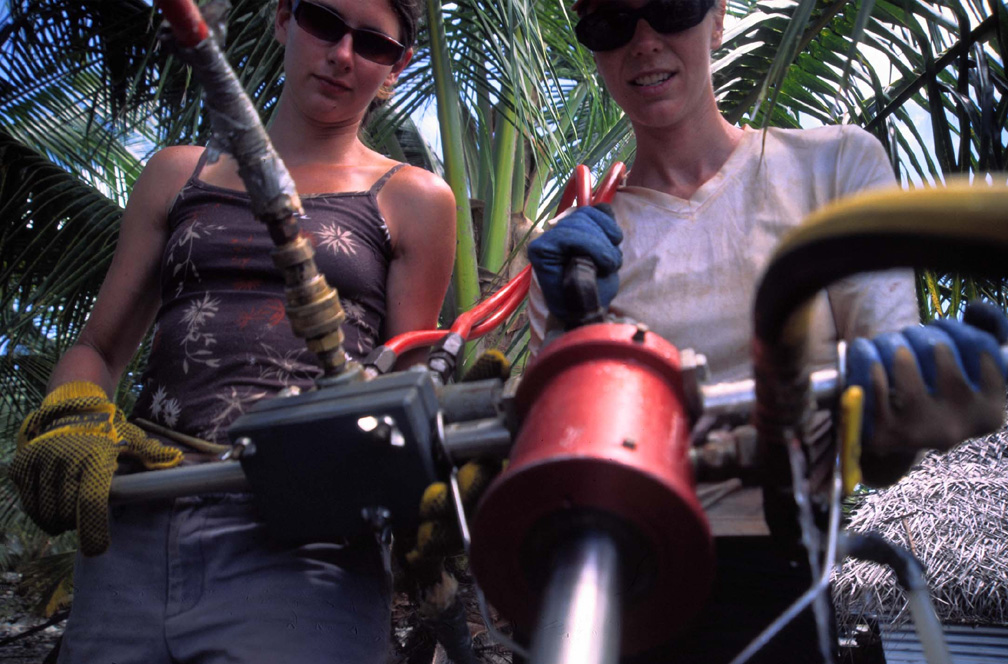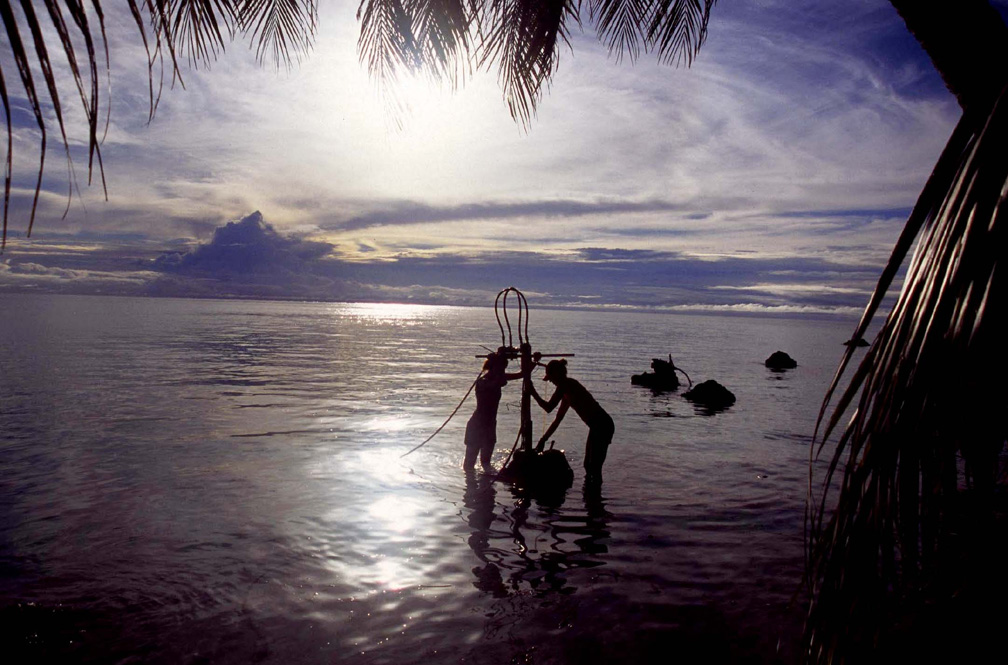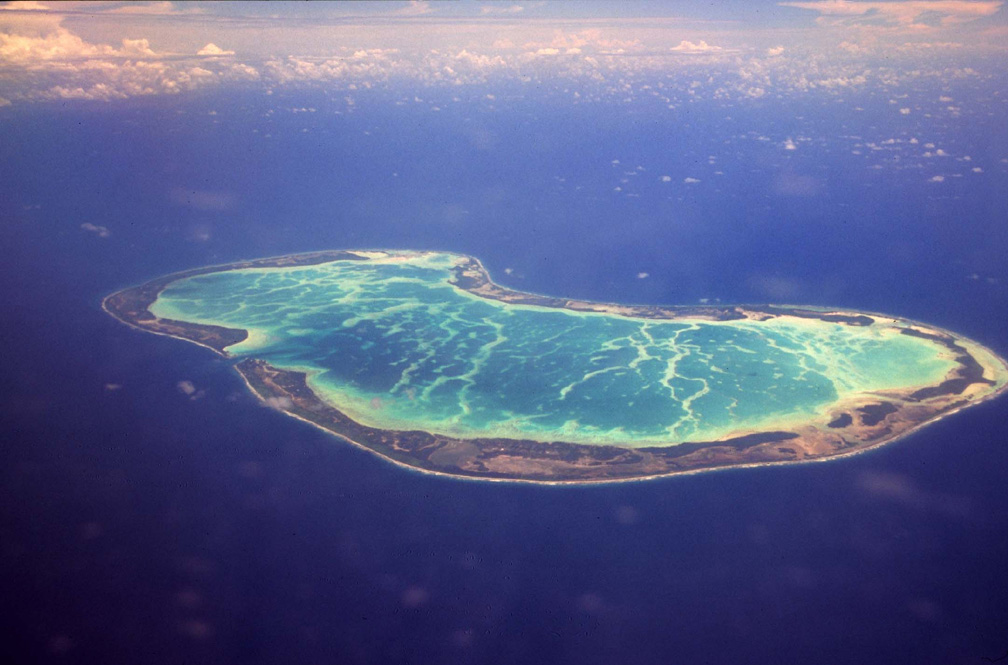
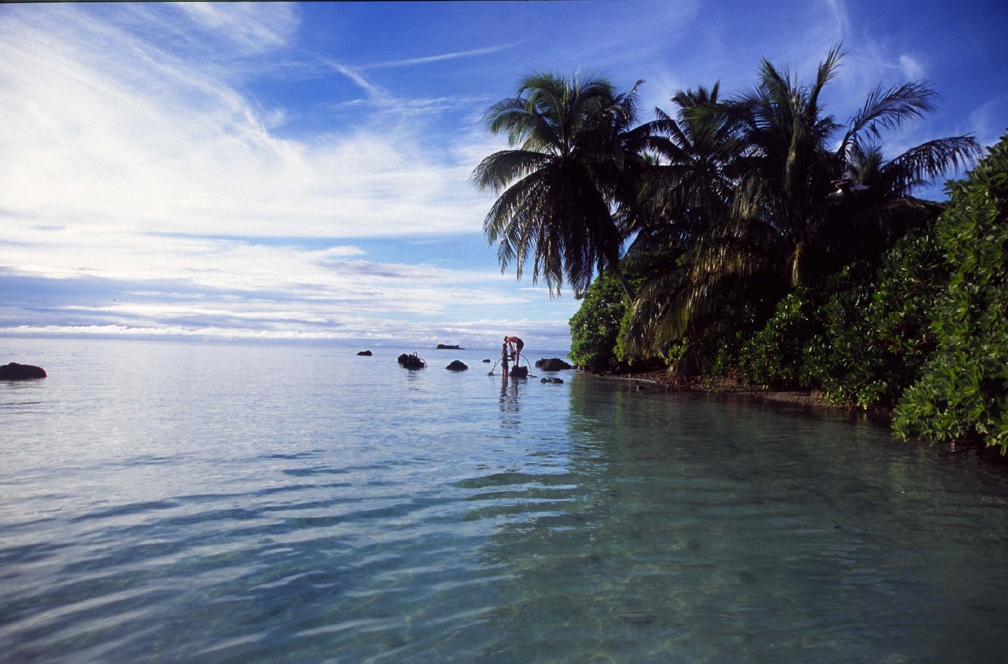
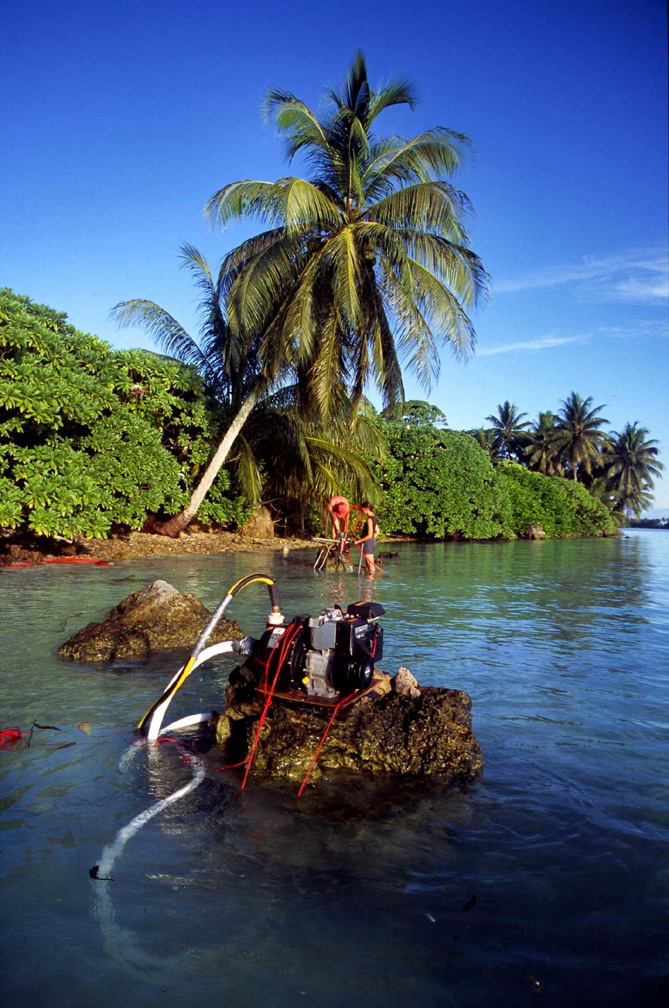
The fossil corals that are scattered on beaches contain records from many centuries ago. We use uranium-thorium radiometric dating techniques to determine when the fossil corals grew on the coral reef. Previous experience on Palmyra and Fanning has taught us that a 6000-yr-old coral boulder looks exactly the same as a 50-yr-old boulder! So that means that we must collect every single fossil coral that we can find, assuming that it might cover the time interval that we are interested in. Hence the tons of fossil coral that we drilled in six long days on Christmas Island.
The drill we use to drill the fossil coral cores was designed to drill corals underwater - it is powered by hydraulics and is combined with a very finicky seawater pump to flush the drill cuttings as we drill. At the end of our fossil coral hunt, our longest core was 110cm long. Assuming growth rates of approximately 1.5cm/yr, that amounts to a 70-yr-long record. It could span from 100A.D. to 170A.D. or it could span from 1850A.D. to 1920A.D. - we eagerly await the U/Th dates from the new cores, which will be ready in 2-3 months. One thing is guaranteed, that the new cores will provide glimpses of El Niņo events that likely affected fledgling cultures many centuries ago, just as modern-day El Niņo events affect societies all over the world.
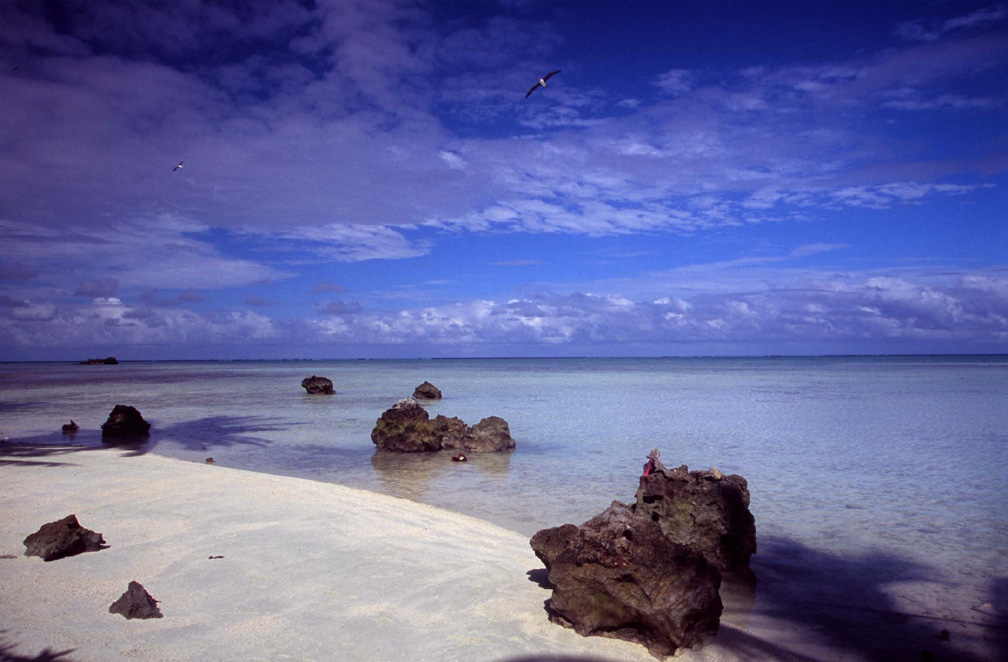
The second component of our field mission involved recovering a core from a living coral on Tabuaeran that can be used to calibrate the relationship between climate parameters and coral geochemistry. This task involved a very different set of scientific, logistical, and safety considerations than the land-based drilling, which while labor-intensive, was relatively straightforward. First, we spent several dives scouting the leeward coral reefs for a suitable Porites coral colony to drill. We hoped to recover the longest record possible, while avoiding any visible surface irregularities, like burrowing worm and clams and fish scars. Eventually we settled on a near perfectly hemispheric 50cm-diameter head in 30 feet of water. Next we had to discuss how we would manage to get Jordan and I, the drill itself, and our drilling tools down to the drill site and back up to the surface safely, while at least one other person monitored the hydraulic and seawater pumps on the boat, both parties connected by 100 feet of unruly hoses. The photographer and videographer would capture the procedure on film. The following day, over the course of two dives, we drilled over 90cm of core from the moderately-sized Porites colony. As with all complex procedures, the beginning moments involved a steep learning curve, but after five minutes of fighting the surge and the 80-lb drill, Jordan and I hit our groove (literally), and the drilling progressed quickly and smoothly thereafter. Kristy, armed with ear protection, manned the pumps on the boat. Jordan and I plugged the coral to prevent burrowing organisms from colonizing the unprotected drill hole. Studies have shown that the coral will grow over the plug within 2-3 years, and I look forward to diving on the reef in several years to check on how the coral is recovering.
Our scientific missions accomplished, I turned my attention to organizing some informal presentations at the elementary and middle schools on Tabuaeran. I tried my best to convey the science behind my repeated visits to Tabuaeran, and passed around a section of the Porites colony we had drilled just the day before. The teachers translated for me, and the children were either very well-behaved, genuinely interested, or both. Of course, during the question and answer session, most of them wanted to know about America, where I lived, what children their age do for fun in the US, and most obviously and importantly, how my scientific investigations would benefit Tabuaeran in the future. I can only offer that hopefully, when all the scientists on the White Holly finish their studies of the Line Island coral reefs, we will be able to help them preserve the beauty and vitality of their reef ecosystem. After my talk, I was showered with gifts, including 50 shell necklaces, 20 green coconuts, 2 large pumpkins, and a large hand-carved mask. Later that day, I took ten teachers out to the White Holly for a tour of the boat. They were mesmerized by some coral polyps under the microscope, and peppered the scientists with questions. Vince and Joanne donated a computer to the middle school, and Cody threw in some school supplies, which are in short supply on the island.
The cruise was a great success for us scientifically, and sailing with an interdisciplinary group of scientists was stimulating and fun. I am confident that insights concerning past and future coral reef health across the Line Islands will only come through the combined expertise of many different marine scientists, and I look forward to sharing data and ideas in the years to come.
—Kim Cobb
Scripps Line Islands Expedition 05
